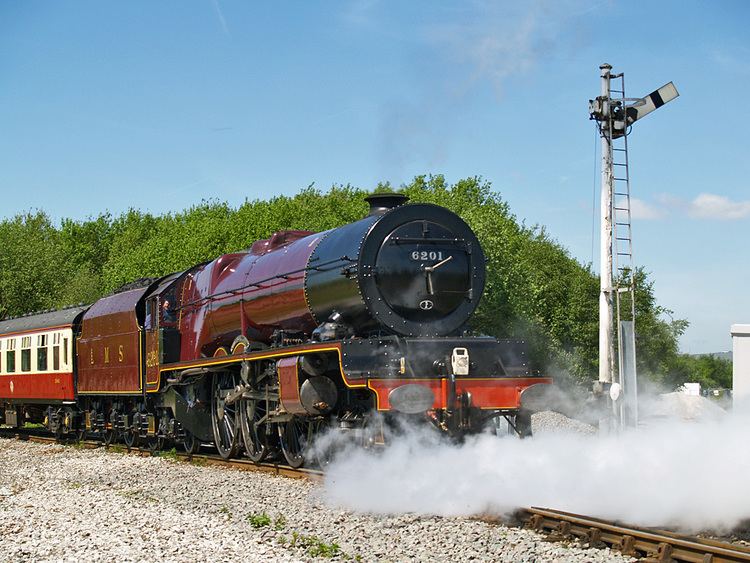Power type Steam Total produced 12 | Build date 1933 (2), 1935 (10) | |
 | ||
Rebuild date 1952 (from Turbomotive) | ||
The London, Midland and Scottish Railway (LMS) Princess Royal Class is a class of an express passenger steam locomotive designed by William Stanier. They were Pacifics (i.e. had a 4-6-2 wheel arrangement). Thirteen examples were built at Crewe Works, between 1933 and 1935 and two are preserved.
Contents
Overview
When originally built, they were used to haul the famous Royal Scot train between London Euston and Glasgow Central.
Construction
A prototype batch of three locomotives was to be constructed in 1933. Two were constructed as drawn but the third set of frames was retained as the basis for an experimental turbine locomotive.
Turbomotive
The third prototype was constructed with the aid of the Swedish Ljungstrom turbine company and known as the Turbomotive, although not named. It was numbered 6202, in sequence with the Princess Royals. Although 'generally similar' to the rest of the Princess Royals, and 'not all that much different', it used a larger 40 element superheater to give a higher steam temperature, more suitable for turbine use. This boiler was also domeless as would later be used for the second batch of the Princess Royals. The continuous exhaust of the turbine, rather than the sharper intermittent blast of the piston engine, also required changes to the draughting and the use of a double chimney. It entered service in June 1935 on the London–Liverpool service.
This Turbomotive was rebuilt in 1952 with conventional 'Coronation' cylinders and named Princess Anne, but was soon destroyed in the Harrow and Wealdstone rail crash.
Later production
A second batch of eleven locomotives was constructed later.
Naming
Each locomotive was named after a princess, the official name for the class was chosen because Mary, Princess Royal was the Commander-in-Chief of the Royal Scots. However, the locos were known to railwaymen as "Lizzies", after the second example of the class named for Princess Elizabeth who later became Queen Elizabeth II of the United Kingdom. Later examples of 4-6-2 express passenger locomotive built by the LMS were of the related but larger, Coronation Class.
Withdrawal
The class was withdrawn in the early 1960s in line with British Railways' modernisation plan.
Preservation
Two examples, 6201 Princess Elizabeth and 6203 Princess Margaret Rose are preserved and both have operated on the mainline in preservation. They were named after the two children of Prince Albert, Duke of York (later King George VI), and his wife, Elizabeth, Duchess of York (later Queen Elizabeth, and after the king's death, Queen Elizabeth the Queen Mother). Princess Elizabeth Alexandra Mary (later Queen Elizabeth II) was seven years old in 1933 when her namesake was built, and Princess Margaret Rose was nearly five in July 1935 when her namesake was completed. At the time, they were third and fourth in line to the throne. 'Princess Margaret Rose' is owned by The Princess Royal Class Locomotive Trust and is on static display at the West Shed Museum, Midland Railway-Butterley, Ripley, Derbyshire.
